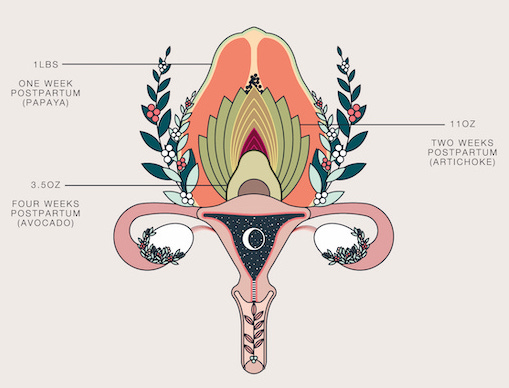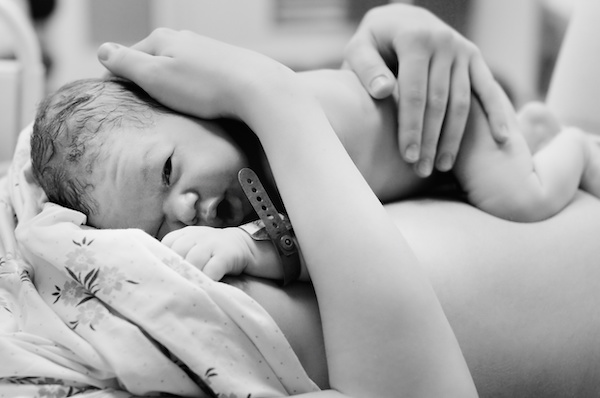I know in each of my recoveries I wanted to get up and move, but caution was given by my providers to rest as much as able. I found that to be the most challenging part in recovery because I had other children and a household to care for…right? Increased movement came with it challenges for me of increased blood flow that lasted a bit longer than it should have.
Common changes can impact our core and pelvic floor which are often the area of social media concentration due to the affect on external appearance. There are other, more delicate structures, that need to be cared for so mama can heal internally as well.
3 Areas important for healing in the 4th trimester:
Trying to pee: After a vaginal birth the urethra and bladder may have been stretched out and or have bruising. If a mama had an epidural or cesarean birth she may have difficulty urinating. During the first several weeks after birth the bladder now has more room to hold urine, but this organ is not used to sensing this new capacity. This can cause over filing and an inability to completely empty the bladder. Urinary incontinence may also occur during this time, but should resolve within 6 weeks to 3 months postpartum.
To support the bladder you can drink healthy fluids like water, and mineral or bone broth. Taking short times to walk or stand throughout the day. Adding 360 breathing and pelvic floor mindfulness activities such as “roll in and roll out.” Placing a hand over the bladder and lovingly breathing gently into that space. Finally, ending the day with an epsom salt or herbal warm bath. The ability of the bladder to return to pre pregnancy states will begin within 6 weeks.
Trying to poop: Constipation was reported to be close to 1/2 of mamas at one week postpartum. Constipation is a number one topic that I discuss with my mamas as I do not want them to be bearing down and straining, especially right after childbirth. The increase in intra abdominal pressure will place pressure on the pelvic organs and the pelvic floor. 1Cooklin, A. R., Amir, L. H., Jarman, J., Cullinane, M., & Donath, S. M. (2015). Maternal physical health symptoms in the first 8 weeks postpartum among primiparous Australian women. Birth, 42(3), 254–260.
To support healthier poos in the early postpartum: 1) Take gradual and short walks, 2) Drink 1/2 your body weight in water, 3) Add healthy fiber to your intake-such as seed cycling, 4) Perform bowel massage, 5) Wear a supportive garment-SRQ pants (use code: LUB8LBU2BM for a discount) or Blanqi pants, 6) Use a squatty potty, 7) Breath steadily and focus on relaxing tension in the body especially the pelvic floor, 8) Download my free guide for more information and something to read while you go poo-its your turn mama to read in the bathroom (sorry dads).

Involution: Did you know that after baby your uterus shrinks to half the size it was at delivery in just one week? The uterus drops its weight from 1000 gm to 50 gm and volume from 5-10 L to 3-5 mL! The cervix closes to 1 cm in one week and is back to its pre baby size 2 weeks after birth (not going to lie I am a little jealous of the cervix). After baby you will still have contractions to help shirk the uterus that subside several days after baby these contractions can be stronger the more babies you have. Nursing will stimulate contractions in the uterus in the beginning days after delivery. Bleeding will continue for 2 weeks to up to 2 months postpartum. This is caused from a large wound in the uterus from where the placenta detached.
To support you uterus from healing massage the abdomen in gentle vertical strokes from the top of the uterus, or fundus, down toward your pubic bone. Check with your care provider if “cramp bark” is okay for you to take as this significantly helped reduce my post baby contractions. Bleeding may increase if you are overactive, especially when going up and down stairs. My midwife had to remind me (a lot) to “not do stairs,” as I was healing.

Postpartum recovery is a beautiful chance for your body to heal after carrying baby for 9 months. The changes that occurred in pregnancy changed our balance, posture, and affected our muscles throughout our body. We even have changes in our organs, breathing, urinary, and digestive tracks. Pregnancy was a major change hormonally and now we have entered the reverse of it. The 4th trimester is not always the most fun and recovery can be hard on a new mama! I believe that knowledge can empower a mama to embrace her new found state and have more grace on her recovering body.
Dr. Rach
References
| ⇧1 | Cooklin, A. R., Amir, L. H., Jarman, J., Cullinane, M., & Donath, S. M. (2015). Maternal physical health symptoms in the first 8 weeks postpartum among primiparous Australian women. Birth, 42(3), 254–260. |
|---|

